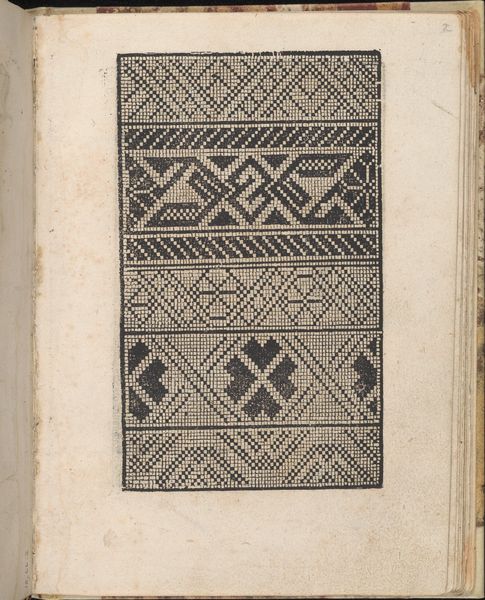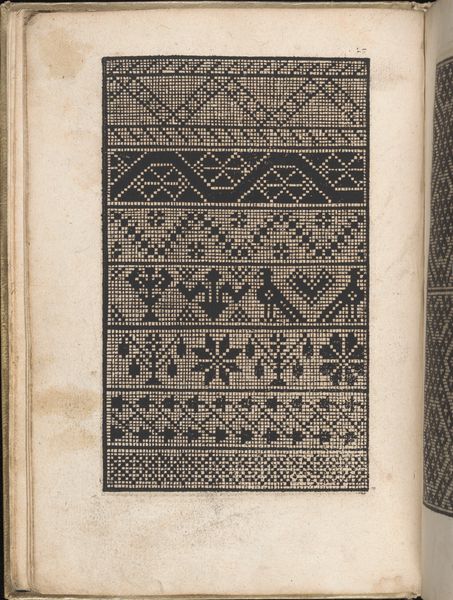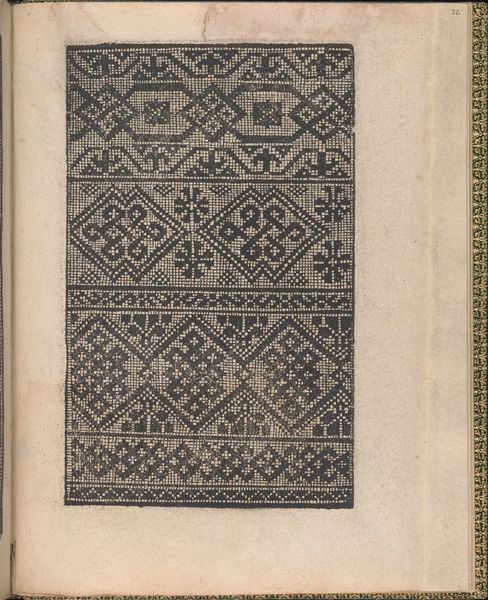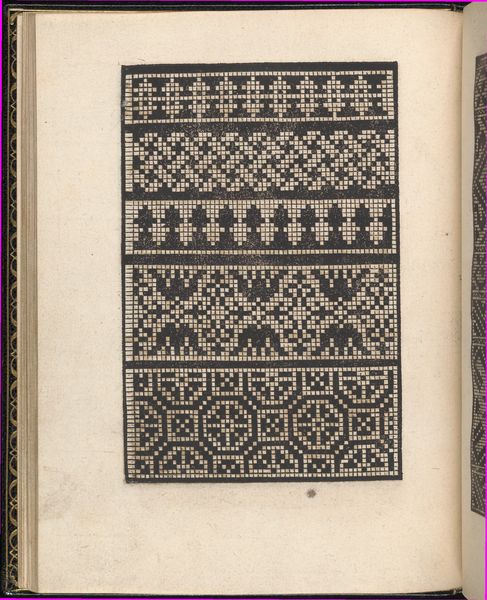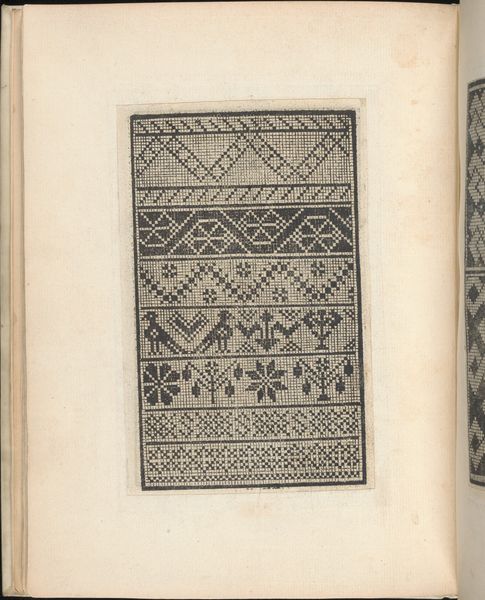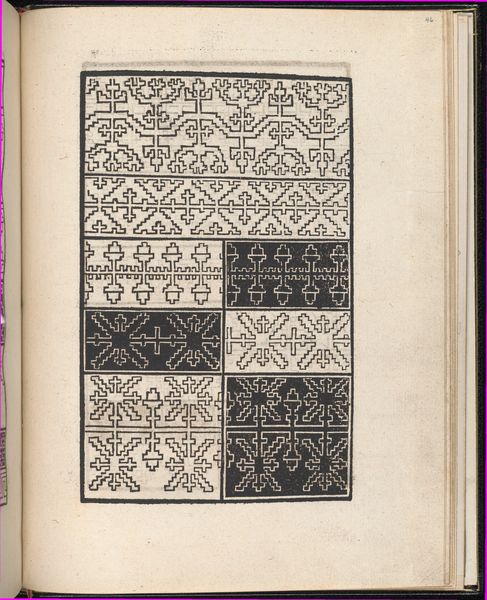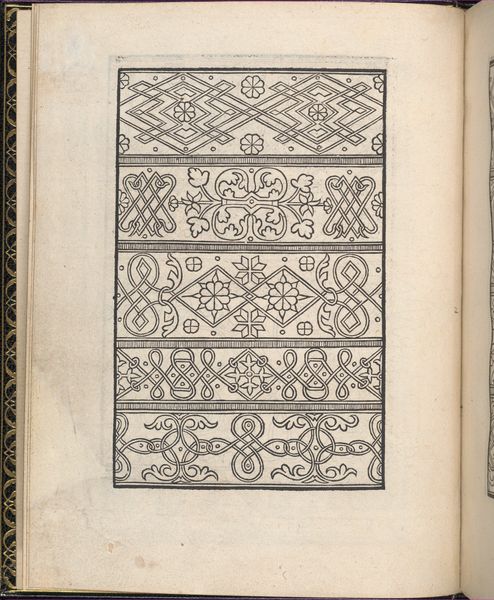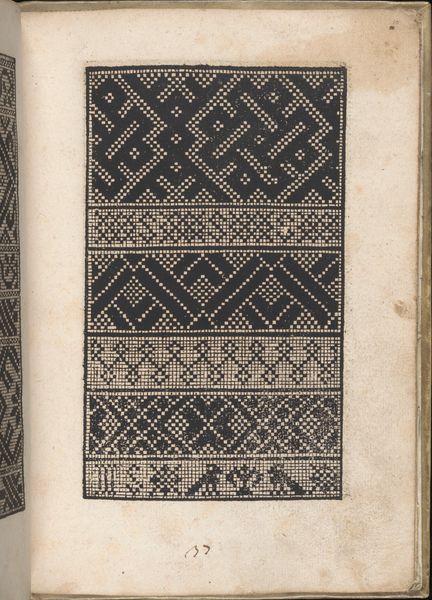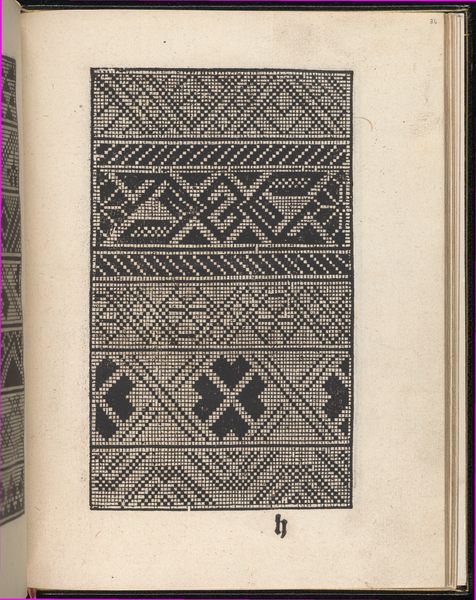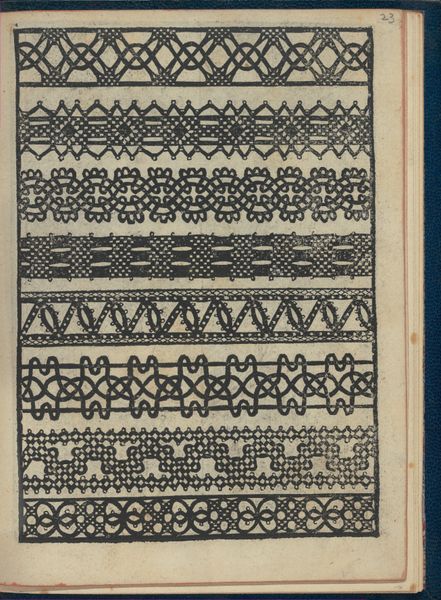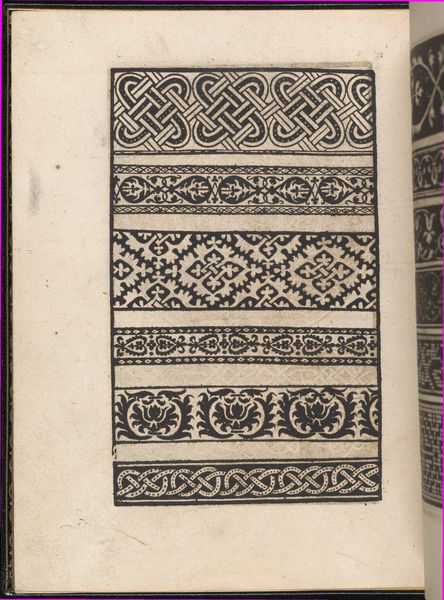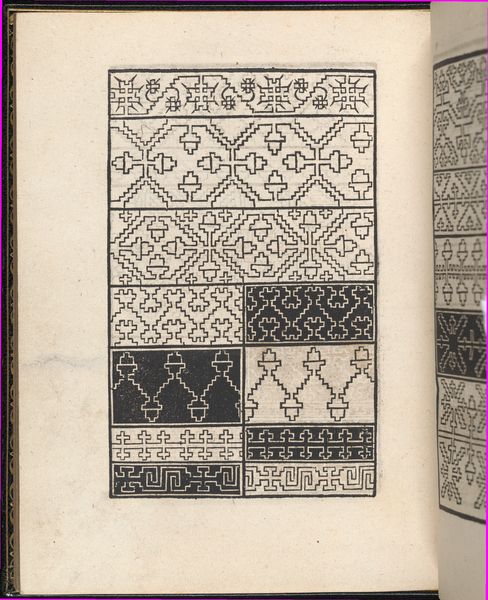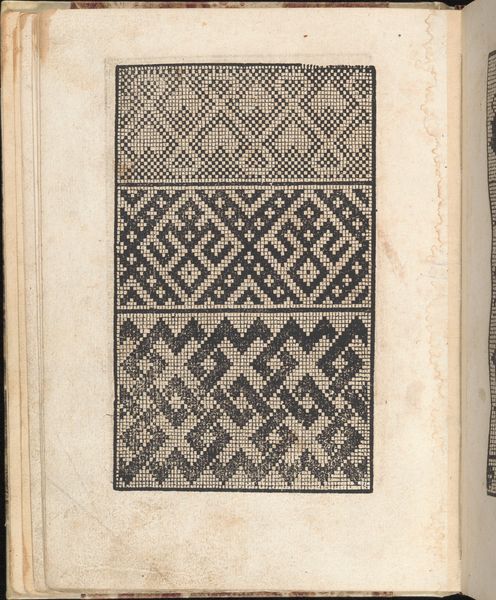
Ein new getruckt model Büchli...Page 6, verso 1529
0:00
0:00
print, woodcut
# print
#
geometric
#
woodcut
Dimensions: Overall: 7 7/8 x 6 1/8 in. (20 x 15.5 cm)
Copyright: Public Domain
Editor: Here we have Johann Schönsperger the Younger’s, "Ein new getruckt model Büchli...Page 6, verso", created in 1529. It’s a woodcut print in black ink. I’m struck by the sheer variety of geometric patterns contained in this single page. How do you interpret this work, considering its historical context? Curator: It’s fascinating how pattern books like these played a role in disseminating visual culture. Schönsperger’s "Model Büchli" wasn’t just a display of aesthetics; it served a very practical social function. It provided artisans—embroiderers, lacemakers, weavers—with designs. These weren’t viewed as unique artistic statements so much as functional blueprints, weren’t they? Editor: Absolutely, I hadn’t considered its functional aspect in such detail. The repetition and modularity lend themselves to that idea. But wouldn't its mass production, and dissemination of images have played some social role in early notions of art as an idea or brand? Curator: Good question. Imagine these patterns travelling, evolving through use and interpretation. They speak to questions of copyright and originality we’re still grappling with today. Did Schönsperger, by making this so easily available, contribute to early versions of branding, establishing certain designs through ease of production and distribution? Editor: I can see your point. By making them so readily accessible he helped spread these design ideas far and wide. Curator: These pattern books raise complex questions. Who had access? Who adapted these designs? Understanding the socio-economic background of its users gives us deeper insights, as does considering how this era saw the rising power of the printed word and image to democratize art, at least on some levels. Editor: I hadn't considered that such a seemingly simple print could reveal so much about society's values and evolving definitions of art. Thank you! Curator: The pleasure's mine. Examining the cultural footprint left by these mass produced images changes how we see the canon, doesn't it?
Comments
No comments
Be the first to comment and join the conversation on the ultimate creative platform.
